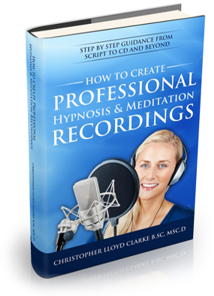Recording a voiceover? Start here…
If you are in the process of creating any type of audio or video production that includes spoken word, then getting a top-quality voiceover recording will be essential to your success.
For many people, the whole idea of recording a voiceover is a bit daunting. It’s one of those technical processes that people seem to have a lot of questions about.
Do I need to visit a recording studio?
Can I record myself at home?
What equipment will I need?
What’s it all going to cost?
By the end of this article you’ll know how to find the right recording studio for you, and you will know exactly how to prepare for a recording session. For those of you who are feeling a bit adventurous (and ready for some technical challenges), I’ve also included some introductory tips on how to record your own voiceover at home.
Recording at a studio
Unless you are fortunate enough to have the equipment and technical skills necessary to record your own voice, you’ll need to organize a trip to a recording studio. Most recording studios charge by the hour, so it goes without saying that the more organized you are, the less time (and money) you’ll spend on studio fees.
What do I mean when I say “organized”?
Well, there are a few things you can do to ensure that the recording process is smooth, efficient and enjoyable…
1. Bring along 2 or 3 copies of your script. The recording engineer may want to read through the script while you are speaking it, and it will help him/her with any editing processes that might be needed after your recording is finished.
2. Rehearse your guided meditation script a few times before you go to the studio so that you’ll feel more relaxed and comfortable when speaking it into a microphone.
3. If possible, decide on what background music you want to use in your recording BEFORE you visit the studio. There are two reasons why this is important:
Reason 1. If you can present your background music to the recording engineer on the same day you record your voice, then it is possible that he or she may be able to blend your voiceover with the music and complete the production of your recording right then and there. This means you may save time and money and avoid repeated trips to the studio.
Reason 2. If you have chosen the background music you want, and if you have it with you when you visit the studio, then you can listen to it while you record your voiceover. This can really help to put you in the right frame of mind while you are speaking, and it can really help to improve the synergy between your words and the music.
Tips on choosing a recording studio
Some of the people I speak to are quite particular about where they record. For example, they don’t want to record a guided meditation in a space that was occupied by a heavy metal band earlier that day!
The internet is the best way for you to research recording studios in your area. Many studios focus on recording bands, but there are studios that also specialize in voiceover recordings. A little online research will steer you in the right direction, but if you are still unsure, don’t hesitate to ask studios if they have any experience recording voiceover productions.
“Mates Rates” – Getting a friend to record your voiceover
More and more people are competent with computers and recording techniques these days, and it’s possible that you know someone who has a home recording studio. Perhaps you’ve asked them if they can help you, or perhaps they have offered their assistance.
Recording with a friend will probably be more comfortable and cheaper than going to a studio, but if you intend to sell your recording then you must ensure that the person you are working with has a suitable level of technical skill and good quality recording equipment.
Obviously this can be a little hard to asses, but as a rough guideline, the minimum requirements for recording at home include:
1. A (very) quiet recording space.
2. A good quality microphone.
3. Knowledge of correct vocal recording techniques.
4. The ability to mix your vocals with your music and to produce a properly mastered audio file.
Tactfully ask your friend if they can answer “yes” to these requirements. If they can, then you may well be able to record your guided meditation in the familiar comfort of a home recording studio.
Recording your own voiceover
Recording your own voiceover and blending it with music to create a professional recording can be quite a complicated procedure, especially if you have no previous experience. To be successful at this, you’ll need to have:
1. A quiet recording space.
2. A good quality microphone (a large diaphragm condenser microphone is one of the most common types that voiceover artists use).
3. Sound recording software.
4. Good microphone technique.
5. A microphone “windshield” – a device that shields your microphone from small blast of air from your mouth while you are speaking.
6. The ability to mix your vocals with your music and to produce a properly mastered audio file using your sound recording software.
The content of this article has been expanded greatly since it was first published. For more in-depth information, be sure to explore the free e-book “How to Create Professional Hypnosis and Meditation Recordings from our parent website, Enlightened Audio. https://www.enlightenedaudio.com/how-to-create-professional-hypnosis-and-meditation-recordings

